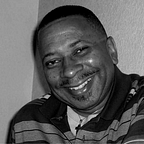Modern in Approach But Divided In Identity
America has been reputed as the “land of opportunity” since the time of its inception. Its message of accommodation and equal opportunity is a lure for people of race and creed to travel to grasp the opportunity that is seemingly on offer for them, some to seek refuge, others to prosper, and still others with no choice in the matter. But, over the years, the collective identity of the Black people has become spread out and segregated and this has led to quite a loss of identity within the Black community.
Blacks in America have been synonymous with the evolution of American culture. They have grown refugees, opportunists, and slaves to be the largest ethnic community in the USA. The Black community has grown and branched out to every facet of American society and integrated itself into the very fabric of American culture. Here we seek to highlight the current state of the Black Community in the USA, some myths which have led to stereotypes, and the cause of the segregation that exists within the community.
A Tale of Oppression
Apart from the oppression and subjugation, it has been a slow road of acceptance, with many a roadblock thrown in the way. The recent cases of George Floyd and Breonna Taylor are stark instances where this ethnic community has suffered brutality and unfair treatment both in terms of the issues themselves and subsequent legal action taken by the state. This has led to an uproar in support and sympathy toward the family of the oppressed and widespread disapproval against the actions taken by the state. However, the Black community themselves have not presented a united front because for the simple reason that they were never united in the first place, so how could they present a united opinion and defence.
In years past, the American education system has often been quite White-centric in its content, hiding faults and exaggerating exploits. American history is always an exercise in learning partial truths and patriotic fables. The White experience is centred, while the Black people are often quarantined to a short section about slavery and quotes by Martin Luther King Jr. The New York Times’ 1619 project opened the doors to a long-overdue conversation of how stories of Black Americans need to be told by themselves. Therefore, Black history is more than about learning about the brutality and oppression Blacks in America have endured but about how they have fought to survive and thrive in America.
Birth of Stereotypes
Some myths are spread about Black people that have given birth to stereotypes and negative impressions about this rich and diverse community:
- Enslaved people did not have any money: Enslaved people were property themselves and were capital that fueled the economy, but that doesn’t mean that they didn’t have money themselves. They earned money by saving their earnings from overwork, hiring themselves out, and independent economic activities with banks and local merchants. Free and enslaved women dominated the local marketplaces, controlling networks that crisscrossed the country. They ensured the sale of fruits, eggs, etc., and ensured a steady flow of cash. This behaviour was demeaned and insulted by White women who labelled them as “loose.” Enslaved people also created mutual aid societies and found innovative ways of conducting business under the notice of the predominantly white society.
- Black revolutionary soldiers were patriots: In short, it refers to the 13 colonies who believed in the ideas expressed in the Declaration of Independence: that America should be a free country, free from Britain. The Black people who joined the continental army sacrificed themselves for the cause. However, the Black people never fought for the country that enslaved them but for freedom itself. It was simply a case of interest convergence.
- Black Men were injected with syphilis during the Tungee Experiment: A myth is that 600 Black men in Mason County, Alabama, were injected with syphilis. This has created a profound distrust of the American Health system. The truth is that 399 of them had the disease already in various stages, and the remaining were healthy and used as a control group. For 40 years, these men were untreated and served only as lab rats for experiments, some of which were inhumane.
Fade of Identity
The Black Population of the USA is diverse, and its members are diverse in origin, with a nuanced ethnic and racial identity reflecting intermarriage and international migration. Due to this, there are key distinctions in the demographic and economic characteristics between different parts of the national Black population, throwing light on its multitude of backgrounds.
Moreover, the Black population’s racial self-identification is starting to change. Those who identify as “Black” or identify with their African descent have declined over the years. In 2019, 40.7 million, or 87%, identified their race as Black alone and their ethnicity as non-Hispanic, while around 3.7 million, or 8%, indicated their race as Black and another race and not Hispanic. Another 2.4 million, or 5%, self-identified as both Black and Hispanic, or Black Hispanic. The nation’s Blacks are changing in other ways as well. Some are foreign-born, the population is ageing, and an increasing share is college graduates.
This has led several communities like Blacks United that serve to illuminate the truth about the rich history and heritage and the need for the Black community to make peace with their identity and seek pride in their roots and heritage.
Author’s Bio:
Chris Dawkins
Chief Operating Officer at E-Log Plus
The Ohio University-San Antonio, Texas
